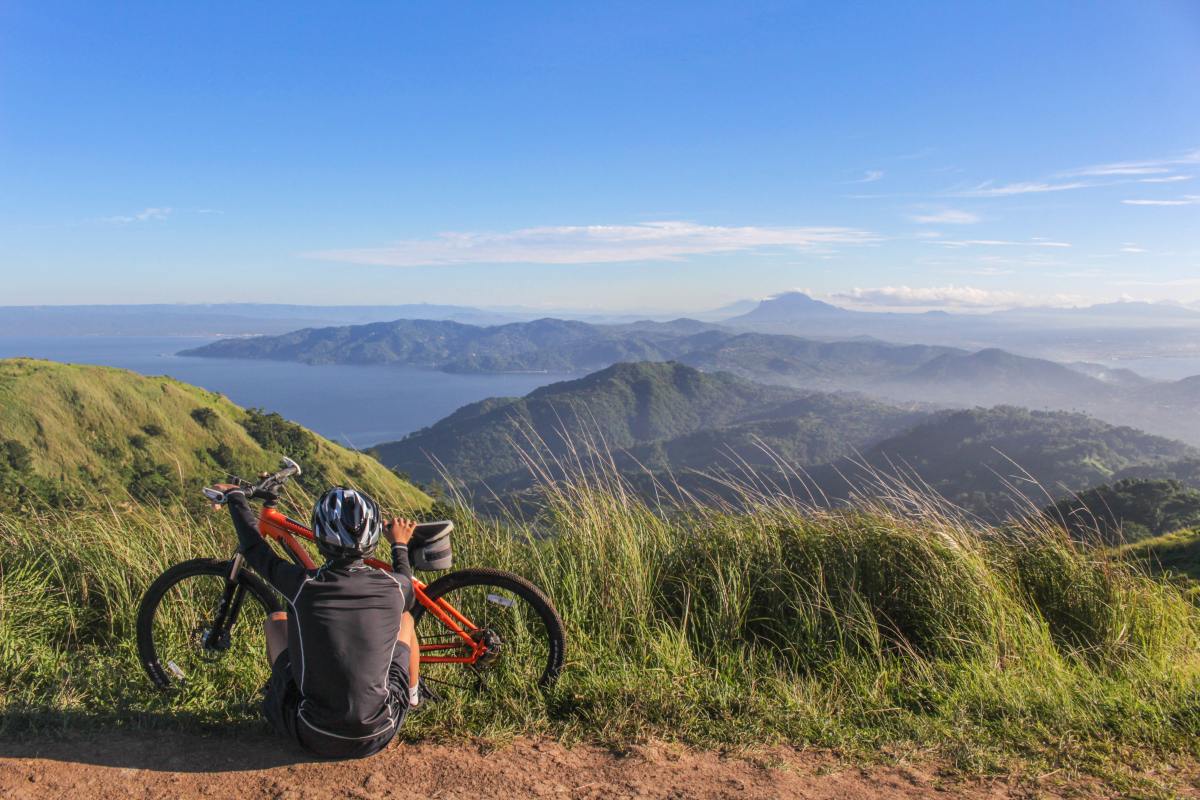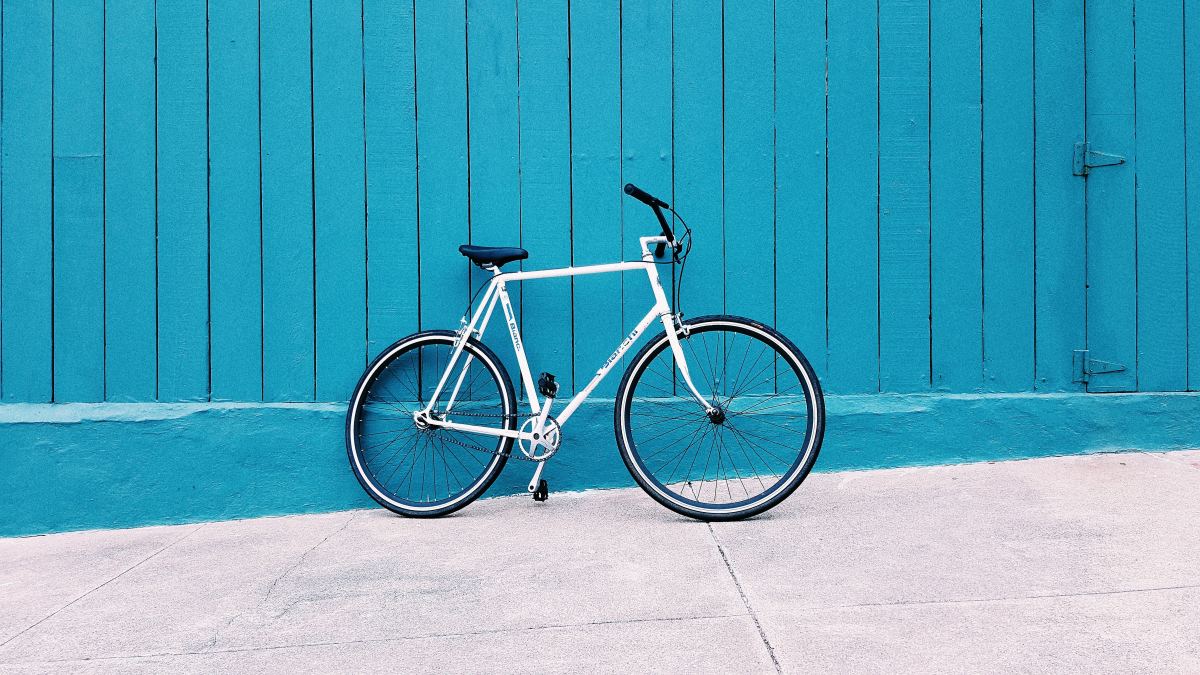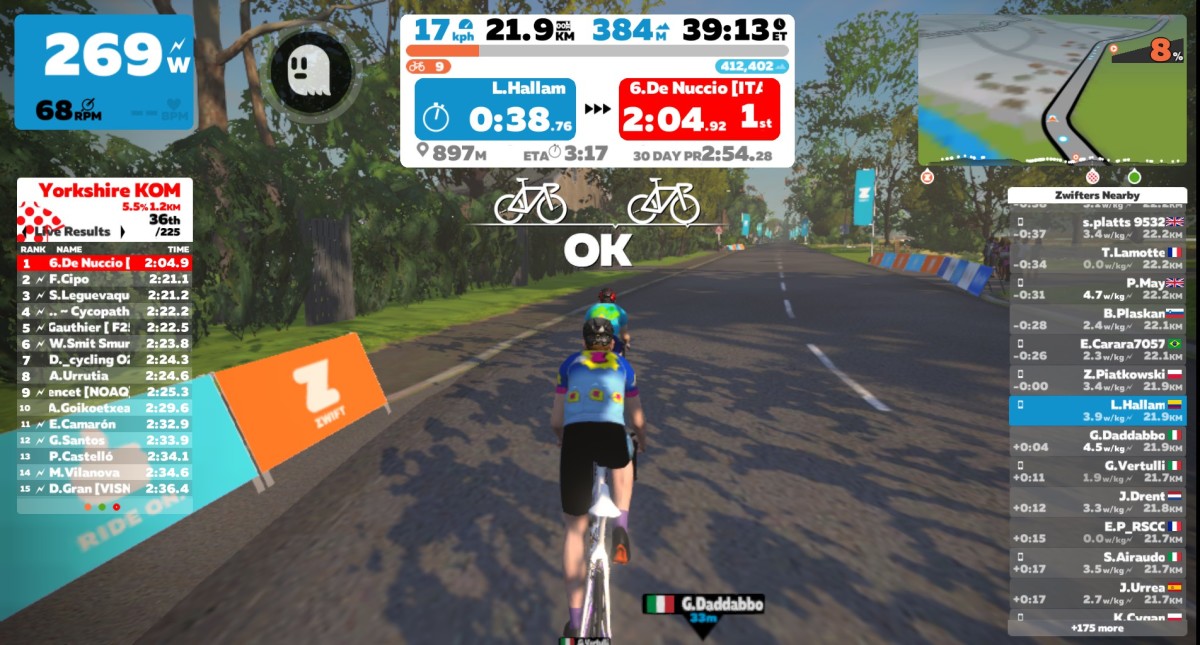Mountain Biking Techniques: Cornering
Cornering
Cornering well on a mountain bike is something that will improve the quality of your ride whether you are on a weekend ride or in a race. The basic premise of cornering is to maximize the amount of grip that your tires have with the trail, this allows you to have the greatest amount of speed when exiting the corner. There is a very easy and proper technique to cornering that many riders fail to utilize. While the technique is simple and easy to grasp, it goes against may riders natural instincts and can take a while to master. We will examine the three important parts of cornering well, the leg and bike position, the upper body position and the exiting technique.
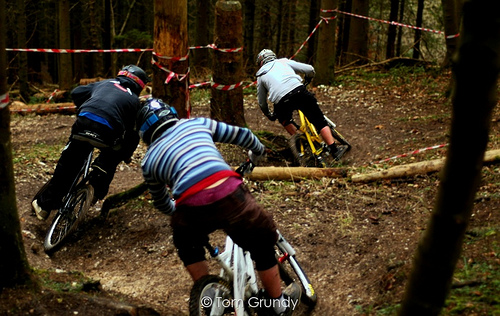
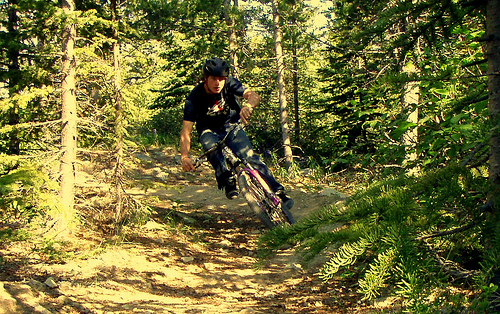
Leg and Bike Position
First off, the bike should lean into the corner. This seems obvious, but as you lean the bike many riders find that the rear wheel will come 'loose' and thus they try to keep their bike vertical. Naturally, as you go faster, the forces created from turning will drive the tires outward increasing traction. As you lean the bike you will feel the tires begin to grip and want to move outward.
This means you will want to keep your legs in a position to increase the downward pressure on the tires to keep them from moving laterally. To do this, you want your leg on the inside of the turn high. The pedal should be as far upward as it can go, and you want to turn your knee outward to match the lean of the bike. The leg on the outside of the turn should be locked downward, with your heel low. With this you want to create down ward pressure on the pedal with this leg. Press the bike into the trail to keep your line in the corner. The knee of your outside leg should rest against the frame, and help to prevent the bike from moving out of its lean.
If there is a need to drift the rear tire to cut the corner, use your outside leg. Lift your heel and push laterally outward with your foot, this will start to slide the back wheel. Then you can drop your heel, and press downward to reestablish forward traction with the trail once the drift clears your corner.
Now, this is an easy technique and many riders embrace this naturally. However, what they fail to do is properly position their upper body when entering and exiting the corner. They lean with the bike into the turn which is an unfortunate mistake....
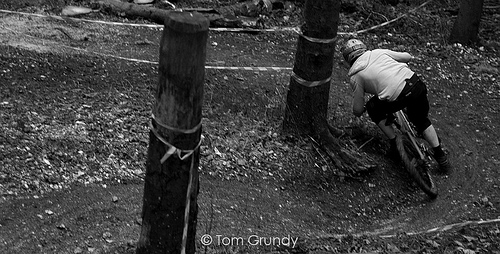
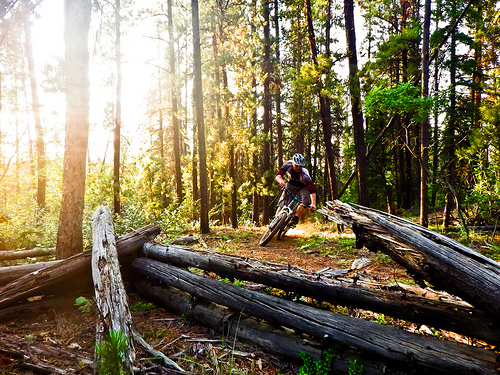
Upper Body Position
Now, when you improperly lean with the bike with your upper body you will find that the pressure you create with your outside pedal will work against you and your center of gravity will tip you downward. You will likely feel like, or will, fall into the inside of the turn. To remedy this, you want to keep your body vertical and centered over the original position of your bike. Leaning the bike will naturally make you feel like you want to lean your body, but instead by staying vertical you will be able to feel the pressure of your outside foot translating downward and not outward. The tighter the turn the move vertical you should try to remain as you enter.
Keeping your outside elbow high will naturally pull your body upward and vertical. Follow the turn with your head and look toward the exit, which will help point your chest and upper body in the proper direction. There will be some tension in your abdominal area on the outside of the turn as you feel the forces of your raised elbow and lowered leg working against each other. This tension will also translate to the hip of your inner leg, where the raised leg and lower arm will feel like your hip is slightly stretched.
Exiting
Once you can feel the bike clear the turn and you know the exit is in sight, remain vertical in the upper body. Don't lean back into the turn, this will carry you further toward the inside or cut your rear tire loose. Look to the exit and in one motion, use your inside arm to lift the bike will pressing down with the outside arm. While doing this, lift your outside knee off the frame, swing your inner knee toward the bike, and use the tension in your hip to get a forceful pedal on the bike. This will carry your bike through the exit with great speed. As you master the cornering technique you will feel the tension that it creates helping you maintain speed though the exit and your flow on the trail will feel much better.
Many times, riders will find that this technique especially exiting is easier to perform in one direction than other. Riders will feel comfortable making a right hand turn, but when turning left they will not be able to get the same exit speed or grip in the corner. When riding with someone have them watch you corner and let you know what mistakes you are making. It can be hard to feel what you can't visualize about your riding. Setting up a digital camera on video mode on a corner and recording yourself is another way to see what you are doing right and what is not working. Remember to record your self turning in both directions so that you will know how to make the appropriate adjustments.
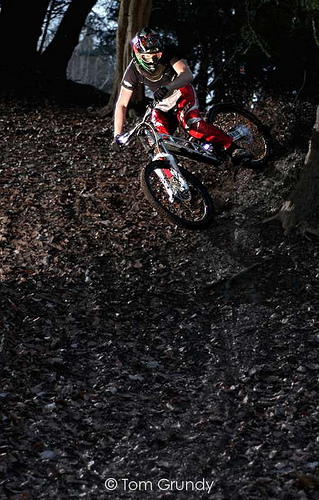
In Review
So here is the brief review of proper cornering technique
- Lean your bike into the turn but.....
- Keep your body vertical and your outside elbow high
- Keep the outside leg down with your heel low and create downward pressure
- The inside knee should remain high and rotate outward to open your hips up
- Look to the exit and when you feel clear of the corner in one motion pull the bike vertical and use the movement of your legs into normal riding position to pedal strongly and increase your exit speed.
Remember to practice on flat and inclined corners, and that more your use this technique the more natural it will become, and the less you will have to think about it. The less you have to think the more flow you will have, and the ride will be more enjoyable.

